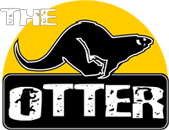Otter Preparation – Final few weeks
Q & A with the Coach – RYAN HODIERNE
What training do I do in the final few weeks?
Your focus should now be on quality over quantity
- Shorter sessions, condensing the quality of each session with a narrower focus for each session (eg stairs sessions – focus on consistency / efficiency & posture)
- Shorter does not necessarily mean faster – remember, you are running the Otter
- Reward yourself with good rest after / during your sessions
- Intervals can include a 2 to 1 rest work ratio
- Kick those feet up immediately after your last few long runs
How much water / fluid do I take with?
- A minimum of 2 litres. Rather have space for more than too little (ie a 2L bladder and a 750ml bottle)
- Possibly add to it a 750ml bottle with an isotonic drink for a boost of electrolytes
- Everyone differs, so be sure to take as much as you think you will need
How do I strategize my hydration & nutritional intake for during the Otter?
Strategize your plan and base it on the following factors:
1) Route profile
2) Weather conditions (have a plan B & C)
3) Determine what works for you now to avoid the uncertainty come race day
What equipment do I need for race day?
- a good reliable pair of shoes
- tried & tested socks
- waist belt / hydration pack / back pack?
- comfortably fitting clothing
- food that works for you
- emergency food (enough to sustain you in case of emergency; minimum of 2 x GU Gels)
- compulsory kit (check the compulsory kit check list)
Optional
- a cap / sunglasses?
- heart rate monitor / GPS – if used during training
- gloves – there are loads of sharp rocks out there
- gaiters – a viable option for the sandy stretches
How do I pack my back pack / hydration pack / hydration belt?
- Evenly distribute the weight in you pack
- Share the weight bearing between your shoulders & hips (if your pack has a waist strap?)
- Rather secure your pack slightly higher than lower on your back
- Adjustable chest & waist straps are a great addition to a pack
- Waterproof the stuff you want to keep dry (ie cellphone /fleece)
- Tuck away loose straps (cable ties do the trick)
- Additional snack pack add-ons are a great option for easy access
- Make a plan where you store your waste while racing (GU & Energy bar wrappers)
How do I pace myself for the prologue?
- Competitive (SUB 6hrs) – you will have to go hard to get inside the top 20% at least.
- Middle of the pack (6 – 8hrs) – run within yourself, don’t go too hard on the first climb.
- Going to finish (8hrs +) – go out and enjoy the route, it is apparently real scenic.
How do I use the pace chart?
Mark Collins & Suunto have put together a great Pace Chart (which you will be provided at registration) to assist in your pacing strategy on race day. According to your projected finishing time, you can work your way back and keep track whether you are on pace or not throughout the different portions of the route.
Through your training thus far, you should have a reasonable idea of your proposed time for the RETTO.
I would suggest you give yourself 2 time projections for race day:
- Your target time that you have been dreaming about, that’s if you are feeling Olympic on the day.
- Your safe time that you know you will manage, even if you are not feeling great on the day.

